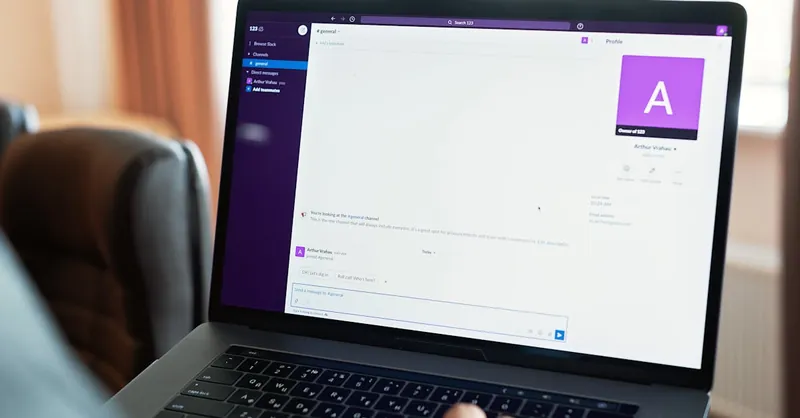Build Online Coding Courses for Income: A Step-by-Step Guide
Category: Programming
Unlock Passive Income by Building Online Coding Courses
If you're a programmer or tech enthusiast looking for innovative ways to generate passive income, creating online coding courses offers a promising opportunity. You likely have the skills and knowledge to teach, but you might be struggling with how to package your expertise into an effective course that sells consistently. Maybe you've searched for ways to monetize your coding skills and ended up overwhelmed by the sheer number of platforms, marketing strategies, and technical setups.
This post is tailored exactly for you — programmers who want to build online coding courses that generate sustainable passive income streams without wasting time on trial and error. We dive into actionable steps, from course ideation to marketing strategies and tech tools, all optimized for maximizing your income. Unlike generic guides, this article focuses specifically on the intersection of programming expertise and online course creation, addressing your unique challenges like structuring technical content, pricing strategies for tech courses, and selecting the right platforms.
Whether you’re just starting to think about your first course or struggling to scale your current offerings, this comprehensive guide will equip you with practical knowledge and insider tips to turn your coding skills into a steady revenue stream. Ready to transform your programming passion into profitable courses? Let’s dive in!
- Unlock Passive Income by Building Online Coding Courses
- Identifying Profitable Coding Course Topics
- Structuring Your Online Coding Course
- Choosing the Right Platform to Host Your Course
- Creating Engaging Video Lectures and Coding Demos
- Effective Pricing Strategies for Coding Courses
- Marketing Your Coding Course to Reach the Right Audience
- Automating Sales and Building Passive Income Streams
- Handling Student Engagement and Feedback: Strategies for Active Learner Communities and Course Improvement
- Scaling Your Coding Course Business: Expanding Income with Subscriptions, Memberships, Coaching, and Collaborations
- Legal and Technical Considerations When Building Coding Courses
Identifying Profitable Coding Course Topics
Choosing the right topic is crucial when building online coding courses that generate sustainable income. To ensure your course idea has strong commercial viability, you need to analyze market demand, conduct thorough keyword research, and validate your topic before investing time and resources. This three-step approach boosts your chances of creating a course that not only attracts learners but also converts into revenue.
Analyze Market Demand
Start by exploring current trends in programming and tech education. Platforms like Udemy, Coursera, and LinkedIn Learning reveal popular course categories and emerging technologies in high demand. Additionally, examine job boards and developer forums (e.g., Stack Overflow, Reddit's programming communities) to identify skills companies seek and where learners are struggling. Understanding learner pain points and industry needs helps pinpoint topics with proven interest and revenue potential.
Use Keyword Research for Course Ideas
Keyword research is a powerful tool to uncover what potential students are actively searching for online. Utilize tools like Google Keyword Planner, Ahrefs, or SEMrush to find search volume and competition metrics for coding topics. Focus on keywords with a healthy balance of high search volume and manageable competition. For example, keywords such as "learn Python for data science" or "React Native app development tutorial" signal clear learner intent and search interest. Integrating these keywords strategically into your course title, description, and marketing will improve visibility and attract targeted traffic.
Validate Your Course Topic
Before fully committing, validate your course idea by:
- Surveying your existing audience or social media followers to gauge interest.
- Launching a pilot mini-course or free webinar to test engagement.
- Checking competitor courses for pricing, enrollment numbers, and reviews to assess market saturation.
- Using pre-sale or crowdfunding platforms to secure early commitments.
This validation ensures your course topic addresses real demand and increases your likelihood of generating consistent sales. Ultimately, combining market analysis, keyword insights, and validation forms a data-driven foundation to select profitable coding course topics that maximize passive income potential.

Image courtesy of ROMAN ODINTSOV
Structuring Your Online Coding Course
Creating a high-quality online coding course involves more than just recording videos; it requires carefully organizing content logically to guide learners from foundational concepts to advanced topics smoothly. A well-structured course enhances engagement, improves comprehension, and significantly increases the likelihood of positive reviews and repeat sales. Follow these best practices to design an effective course structure tailored for programming learners:
Plan Clear, Progressive Lessons
Outline your course by breaking down your topic into bite-sized lessons that build on each other sequentially. Begin with fundamental concepts and gradually introduce more complex topics, ensuring learners don't feel overwhelmed early on. Each lesson should have specific learning objectives to focus students' attention and measure their progress.
Integrate Practical Coding Exercises
Programming is a skill best learned by doing. Incorporate hands-on coding exercises, quizzes, and mini-projects throughout the course to reinforce theoretical knowledge and develop real-world problem-solving abilities. Use platforms like GitHub or online coding sandboxes (e.g., Repl.it, CodeSandbox) to enable learners to practice interactively without setup barriers.
Leverage Multimedia Resources for Engagement
To accommodate different learning styles and keep students motivated, blend various multimedia elements such as:
- Screen recordings and live coding demos to illustrate concepts clearly.
- Infographics and flowcharts that visualize algorithms and workflows.
- Interactive quizzes and coding challenges to test understanding dynamically.
- Supplementary downloadable resources like cheat sheets, code snippets, and cheat sheets.
This diverse content mix not only enriches the learning experience but also helps optimize your course for SEO by targeting a broader range of learner queries and preferences.
Use Consistent Formatting and Naming Conventions
Maintain a standardized format for all lessons, including consistent file naming, heading styles, and video lengths. Clear, uniform formatting enhances usability, reduces confusion, and makes it easier for search engines to index your course content effectively.
By thoughtfully structuring your online coding course with clear lesson planning, practical exercises, and rich multimedia, you craft a compelling, learner-friendly experience that stands out in a crowded marketplace — maximizing engagement and ultimately your passive income potential.

Image courtesy of Markus Spiske
Choosing the Right Platform to Host Your Course
Selecting the ideal platform to host your online coding course is a critical decision that directly impacts your course’s visibility, accessibility, and revenue potential. Each platform offers unique features, pricing models, and audience reach — understanding these differences enables you to align the platform choice with your business goals and technical capacity. Below is a comparison of some of the most popular platforms for hosting coding courses:
Udemy
- Audience Reach: Udemy boasts a massive global learner base, which means built-in exposure without heavy upfront marketing.
- Pricing Model: Udemy controls pricing and frequently offers discounts, which can reduce your revenue share, but the volume of students often offsets this.
- Features: Easy course setup, built-in marketing tools, robust analytics, but limited control over branding and pricing.
- Best For: Creators seeking quick market entry and passive exposure through a large established audience.
Teachable
- Audience Reach: Smaller than Udemy but growing; more reliant on your own marketing efforts.
- Pricing Model: Monthly subscription plans with no transaction fees on higher paid tiers, giving you more control over pricing and profits.
- Features: Full customization of course branding, ability to bundle courses, integrate email marketing, and create membership sites.
- Best For: Programmers looking for flexibility, branded experiences, and control over pricing and student relationships.
Coursera
- Audience Reach: Targets professional and academic learners, often in partnership with universities and companies.
- Pricing Model: Typically requires institutional affiliation or partnerships, with revenue-sharing models.
- Features: High credibility, certification paths, and structured learning but less suitable for independent creators launching solo courses.
- Best For: Experts partnered with institutions or offering advanced, accredited programming courses.
Self-Hosted Options
- Audience Reach: Requires you to drive all traffic independently through marketing channels like SEO, social media, and email.
- Pricing Model: No platform fees beyond hosting costs; full control of pricing and customer data.
- Features: Total customization with tools like WordPress + LMS plugins (LearnDash, LifterLMS), full branding control, ability to upsell and build long-term customer relationships.
- Best For: Experienced creators willing to invest time in marketing and technical setup for maximum control and profit.
| Platform | Audience Reach | Pricing Model | Key Strengths | Ideal For |
|---|---|---|---|---|
| Udemy | Very Large | Revenue share, dynamic pricing | Massive audience, ease of use | Quick launch, passive reach |
| Teachable | Medium | Subscription-based, no fees | Customization, marketing tools | Control & branding |
| Coursera | Professional/Academic | Partnership-based | Credibility, certificates | Institutional/advanced courses |
| Self-Hosted | Depends on marketing | Hosting fees only | Full control, customization | Long-term brand builders |
Choosing the right platform depends on your priorities: maximize audience and speed to market with platforms like Udemy, or opt for full control and branding by self-hosting or using a platform like Teachable. Balancing ease of use, revenue potential, and your ability to manage marketing will set the foundation for a sustainable and profitable coding course business.

Image courtesy of Mikhail Nilov
Creating Engaging Video Lectures and Coding Demos
High-quality video lectures and coding demos are the cornerstone of successful online coding courses that attract and retain learners while boosting your passive income. Captivating visuals paired with clear narration elevate the learning experience, helping students grasp complex programming topics more effectively. To produce polished, professional content, focus on these essential elements:
Recording High-Quality Screen Captures
Screen recording is vital for demonstrating coding techniques, debugging, and software walkthroughs. Use tools that record crisp, lag-free video to maintain viewer engagement. Popular screen capture software includes:
- OBS Studio (free, open-source, ideal for live streams and recordings with customizable scenes)
- Camtasia (user-friendly, powerful editing features suitable for creating tutorials)
- ScreenFlow (Mac-exclusive, great for high-resolution recording and editing)
- Loom (quick, browser-based recording, perfect for concise snippets or asynchronous demos)
Aim for a resolution of at least 1080p and maintain a steady frame rate (30+ FPS) to ensure smooth playback. Minimize background distractions by disabling notifications and closing unrelated applications.
Crafting Clear, Engaging Narration
Your voice guides learners through the material, so clear and confident narration is indispensable. Follow these tips:
- Write concise but informative scripts to avoid rambling.
- Use a quality external microphone (USB or XLR) to reduce echo and background noise.
- Speak slowly and enunciate technical terms carefully.
- Modulate your tone to emphasize key points and maintain listener interest.
- Edit audio post-recording to remove filler words, pauses, or background disturbance.
Incorporating Live Coding Streams and Demo Recordings
Live coding streams offer an authentic way to showcase problem-solving in real-time and foster interaction. Platforms like Twitch, YouTube Live, and Streamlabs OBS are excellent for streaming and recording your sessions simultaneously. For recorded demos, pre-plan coding examples that reinforce lesson objectives and add captions or annotations to highlight important lines of code.
Recommended Software and Tools for Polished Content Production
Producing professional-grade videos often requires more than just recording. Editing, adding overlays, and syncing audio are key steps to enhance learner comprehension and polish your course. Recommended tools include:
| Tool | Purpose | Platform | Key Features |
|---|---|---|---|
| Adobe Premiere Pro | Advanced video editing | Windows, macOS | Multitrack editing, color correction |
| DaVinci Resolve | Free professional editing | Windows, macOS, Linux | Color grading, audio mixing |
| Audacity | Audio editing | Cross-platform | Noise reduction, equalization |
| Descript | Video & audio transcription | Windows, macOS | Text-based video editing, filler removal |
By combining high-resolution screen recordings, clear and well-paced narration, and dynamic live coding sessions using the right software tools, you’ll create engaging, visually appealing content that appeals to learners and ranks well in search results. This polished delivery not only enhances student satisfaction but also increases course completion rates and boosts positive reviews—key drivers for sustainable passive income through your coding courses.

Image courtesy of Mizuno K
Effective Pricing Strategies for Coding Courses
Setting the right price for your online coding course is critical to maximizing revenue while attracting the right learners. Effective pricing strategies involve a combination of market analysis, competitor benchmarking, and assessing the value your course delivers. By understanding the competitive landscape and your unique selling points, you can position your course optimally to boost conversions and long-term income.
Market Analysis and Competitor Benchmarking
Begin by researching what similar coding courses charge on popular platforms like Udemy, Teachable, and Coursera. Analyze:
- Course length and depth – longer, more comprehensive courses often command higher prices.
- Skill level – beginner courses tend to be priced lower than advanced or specialized topics like machine learning or blockchain development.
- Instructor reputation – courses backed by well-known developers or institutions can charge premium prices.
- Student reviews and engagement metrics – high-rated courses may justify higher pricing due to perceived quality.
Use this data to establish a realistic price range for your niche and avoid underpricing that undervalues your expertise or overpriced offerings that deter potential students.
Value-Based Pricing and Communication
Besides benchmarking, focus on the value your course provides to learners. Highlight unique benefits such as:
- Hands-on coding exercises and real-world projects
- Access to exclusive resources, community forums, or mentorship
- Career advancement opportunities or certifications
- Time-saving techniques and insider tips not found elsewhere
Align pricing with these value propositions. For example, a course offering personalized feedback demands a higher price compared to a purely self-paced video series. Make sure your course title, description, and sales page clearly communicate this value to justify your pricing tier.
Strategic Use of Discounts and Bundles
Dynamic pricing through discounts and bundles can accelerate sales and increase overall revenue:
- Time-Limited Discounts: Offering early-bird or launch discounts creates urgency and encourages enrollments.
- Seasonal Sales: Leverage holidays and tech-related events for promotional pricing boosts.
- Course Bundles: Package multiple courses targeting complementary skills (e.g., front-end and back-end development) at a combined discounted price to increase average transaction value.
- Membership Models: Offer subscription access to your full course catalog for steady, recurring income.
Be strategic to avoid eroding your course's perceived value by overusing discounts. Use them as tactical tools to attract new learners and reward loyal customers rather than permanent pricing fixes.
By applying market-informed, value-driven pricing combined with tactical discounts and bundles, you position your coding courses to capture the right audience willing to invest in quality education—paving the way for sustainable, scalable passive income.

Image courtesy of Tobias Dziuba
Marketing Your Coding Course to Reach the Right Audience
Creating an outstanding coding course is only half the battle; marketing your course effectively is essential to attract targeted learners and generate continuous passive income. To maximize visibility and enrollments, leverage a combination of SEO, social media marketing, email funnels, developer communities, and content marketing strategies designed specifically for programming audiences.
Leverage SEO to Boost Organic Traffic
Optimizing your course and sales pages for search engines is the cornerstone of sustainable marketing. Use your earlier keyword research to naturally incorporate high-intent search terms such as “learn JavaScript online” or “best Python course for beginners” in your course title, descriptions, and metadata. Additionally:
- Optimize page load speed and mobile usability to improve Google rankings.
- Create in-depth blog posts, tutorials, or resource pages related to your course topics to target long-tail keywords and demonstrate expertise.
- Use schema markup (Course schema) to enhance search listing appearance with rich snippets like ratings and pricing, which boost click-through rates.
By building a solid SEO foundation, you attract organic, highly motivated learners actively searching for coding education, reducing your reliance on paid ads.
Engage Your Audience Through Social Media Marketing
Social media platforms such as Twitter, LinkedIn, Reddit, and Facebook groups host active developer communities where you can share valuable content and promote your courses subtly. For maximum impact:
- Share code snippets, tips, and mini-tutorials that showcase your expertise.
- Host live Q&A sessions or webinars to engage directly with your target learners.
- Collaborate with tech influencers or niche communities to extend your reach.
- Use platform-specific hashtags (e.g., #100DaysOfCode, #LearnToCode) to join ongoing conversations.
Consistently providing helpful, non-salesy content nurtures trust and builds a loyal following eager to enroll in your paid courses.
Build Highly Effective Email Funnels
Email marketing remains one of the highest ROI channels for online course sales. Capture leads through free resources, such as cheat sheets, mini-courses, or coding challenge PDFs, and nurture them with automated email sequences that:
- Provide value-packed tutorials and programming insights.
- Showcase testimonials and success stories from past students.
- Offer exclusive discounts and early-bird access to new courses.
Segment your email lists based on subscriber interests and engagement to deliver personalized course recommendations, dramatically increasing conversion rates and long-term revenue streams.
Participate Actively in Developer Communities
Joining and contributing to popular developer forums and communities like Stack Overflow, GitHub discussions, and programming subreddits gives you direct access to your target market. Offer genuine help answering coding questions, share your learning resources, and subtly introduce your course where appropriate. This authentic involvement builds authority, drives referral traffic, and cultivates word-of-mouth promotion among peers.
Utilize Content Marketing to Showcase Authority
Publishing rich, well-structured content such as tutorial blog posts, in-depth guides, and problem-solving articles related to your course subjects ranks you as a trustworthy expert. This content acts as a magnet for organic traffic and provides multiple entry points for prospective students to discover and purchase your course. Embedding calls-to-action (CTAs) for your courses within relevant articles encourages seamless learner journeys from content consumption to course enrollment.
By combining these marketing strategies—SEO, social media engagement, email funnels, community participation, and authoritative content marketing—you create a powerful ecosystem that continually attracts qualified learners. This targeted approach not only amplifies course visibility but also fosters a strong brand presence within the programming education space, ultimately driving sustainable passive income growth.

Image courtesy of Lukas
Automating Sales and Building Passive Income Streams
To truly unlock passive income potential from your online coding courses, it's essential to implement automated sales systems that consistently convert prospects without requiring constant manual effort. By designing sales funnels, integrating affiliate marketing programs, and hosting evergreen webinars, you can generate a steady stream of income while focusing more on course updates and new content creation.
Setting Up High-Converting Sales Funnels
A well-crafted sales funnel guides potential students through a seamless journey—starting from awareness and engagement to final purchase and beyond. Key components include:
- Lead Magnets: Offer free, valuable resources like coding cheat sheets, mini-courses, or project templates in exchange for email signups.
- Nurture Sequences: Send automated email drip campaigns with tutorials, tips, and success stories that build trust and demonstrate your expertise.
- Tripwire Offers: Present a low-cost introductory course or workshop that lowers the barrier to entry and warms leads for higher-priced offerings.
- Main Course Promotion: Introduce your full coding course with compelling sales pages, clear value propositions, testimonials, and limited-time discounts.
- Upsells & Cross-Sells: After purchase, offer advanced courses, coaching sessions, or exclusive memberships to increase customer lifetime value.
Automating these stages with email marketing platforms like Mailchimp, ConvertKit, or ActiveCampaign ensures consistent lead engagement and maximizes conversions with minimal ongoing management.
Leveraging Affiliate Programs for Extended Reach
Affiliate marketing allows you to expand your sales reach by incentivizing others—bloggers, influencers, and developer communities—to promote your coding courses in exchange for commission. To create an effective affiliate program:
- Choose reliable affiliate software or platforms like Tapfiliate, ShareASale, or Podia that track referrals and process commissions seamlessly.
- Set competitive commission rates (typically 20-50%) to motivate affiliates while maintaining profitability.
- Provide affiliates with promotional materials such as banners, email templates, and sample posts to ensure consistent messaging.
- Regularly communicate and support your affiliates with performance updates, incentives, and recognition.
Affiliate programs multiply your sales channels without increasing your workload, accelerating passive income growth.
Hosting Evergreen Webinars to Drive Sales Continuously
Evergreen webinars are pre-recorded, automated presentations that simulate live learning experiences and sales pitches anytime, anywhere. They are highly effective for converting interested leads into customers because they provide real-time engagement cues and detailed walkthroughs of your coding courses.
To build a successful evergreen webinar funnel:
- Create an engaging, educational webinar that addresses common pain points and showcases how your course solves them.
- Use webinar platforms like EverWebinar, Demio, or WebinarJam that support automation, audience interaction, and integration with email marketing tools.
- Schedule automated reminders and follow-ups to maximize attendance and conversions.
- Incorporate strong calls to action and time-sensitive offers to encourage immediate enrollment.
By combining automated sales funnels, affiliate marketing, and evergreen webinars, you build a self-sustaining ecosystem that continuously attracts, nurtures, and converts learners. These strategies minimize your hands-on involvement while maximizing the revenue generated from your online coding courses, transforming your programming expertise into a scalable passive income machine.

Image courtesy of Mikael Blomkvist
Handling Student Engagement and Feedback: Strategies for Active Learner Communities and Course Improvement
Sustaining student engagement and systematically gathering constructive feedback are pivotal to creating thriving online coding courses that generate continuous passive income. Active learner communities not only boost course completion rates but also foster word-of-mouth promotion and provide invaluable insights for course refinement. Here are effective strategies to maintain engagement, collect feedback, and capitalize on your existing audience through upselling.
Building and Maintaining Active Learner Communities
Creating a dedicated community space for your students encourages collaboration, peer support, and lasting connections that enhance the course experience. Consider these approaches:
- Choose the Right Platform: Use forums integrated within your course platform or leverage external tools like Discord, Slack, or Facebook Groups designed for interactive discussions.
- Facilitate Regular Interaction: Schedule weekly Q&A sessions, live coding hangouts, or monthly challenges to keep learners motivated and engaged.
- Encourage Peer Learning: Promote code reviews, project showcases, and knowledge-sharing threads to foster a collaborative learning culture.
- Recognize Contributions: Highlight active participants through badges, shoutouts, or featured projects to incentivize continued involvement.
An engaged community helps students stay committed, reduces dropout rates, and transforms learners into evangelists who promote your course organically.
Collecting and Utilizing Constructive Feedback
Consistently gathering student feedback empowers you to identify pain points, improve course materials, and stay aligned with learner needs:
- Surveys and Polls: Deploy post-module or periodic surveys using tools like Google Forms or Typeform to collect quantitative and qualitative responses on course clarity, pacing, and content relevance.
- In-Platform Feedback Tools: Utilize built-in course feedback features where available, enabling quick rating and comments after each lesson.
- Active Monitoring of Community Discussions: Analyze forum threads to detect recurring questions or difficulties that may signal content needing enhancement.
- Solicit Testimonials and Reviews: Encourage satisfied learners to leave detailed course reviews that boost credibility and guide prospective students.
Regularly integrating feedback keeps your content fresh, aligns with evolving technologies, and demonstrates your commitment to learner success—core factors that drive repeat purchases and referrals.
Upselling Advanced Content to Maximize Revenue
Once you have an engaged and satisfied student base, strategically upselling advanced courses or premium content can significantly increase your lifetime customer value:
- Offer Continuation Courses: Create progressive modules that dive deeper into specialized topics like advanced algorithms, DevOps, or cloud-native app development, marketed directly to beginners completing your foundational course.
- Introduce Exclusive Masterclasses or Mentorship: Provide limited-access workshops or 1-on-1 coaching sessions as premium add-ons for personalized learning.
- Bundle Advanced Content with Community Access: Package advanced lessons with perks like priority support, direct instructor feedback, or exclusive forum sections.
- Use Email and Community Channels for Promotion: Leverage your existing email list and engaged communities to announce new offerings, providing special discounts or early-bird access to encourage enrollments.
By nurturing your learners through continuous engagement and thoughtfully crafted upsell paths, you convert one-time buyers into loyal customers—unlocking sustainable passive income and amplifying the profitability of your coding courses.

Image courtesy of Ivan Samkov
Scaling Your Coding Course Business: Expanding Income with Subscriptions, Memberships, Coaching, and Collaborations
Once your initial coding courses gain traction, the next step to maximize passive income is to scale your business by diversifying your income streams beyond one-time course sales. Implementing subscription models, building membership sites, offering coaching upsells, and collaborating with other creators can exponentially increase your revenue while deepening learner engagement and loyalty.
Subscription Models and Membership Sites for Recurring Revenue
Subscription models provide predictable, recurring income by offering learners ongoing access to your coding content library or regularly updated materials. You can create membership sites that bundle multiple courses, exclusive tutorials, coding challenges, and community access behind a subscription paywall. Benefits include:
- Steady cash flow to support continuous content development.
- Ability to build a loyal customer base eager for fresh learning resources.
- Opportunities to introduce tiered memberships with escalating perks such as live workshops or personalized code reviews.
Platforms like Teachable, Kajabi, and Podia support memberships or subscriptions with integrated payment handling and content gating. Cultivating a vibrant membership community reduces churn and increases customer lifetime value, key to sustainable passive income growth.
Coaching and Personalized Upsells
Many learners crave personalized guidance beyond self-paced videos. Offering coaching upsells such as one-on-one mentoring, code reviews, or live group sessions adds a premium revenue layer with higher per-customer returns. Coaching appeals to serious students willing to invest for accelerated learning and direct access to your expertise. Consider structuring coaching as:
- Hourly consults or code audits.
- Weekly office hours or Q&A groups.
- Exclusive mastermind cohorts limited in size for focused interaction.
Combining automated courses with live coaching balances scalability and personalization, perfect for creators seeking to expand income without sacrificing quality.
Collaborating with Other Creators for Joint Offerings
Partnering with fellow programmers or content creators enables you to tap into new audiences and create joint courses, bundles, or workshops that add unique value. Collaboration benefits include:
- Sharing marketing efforts and multiplying visibility.
- Offering comprehensive, multi-disciplinary expertise attractive to a broader learner base.
- Cross-promoting each other's products to diversify revenue channels.
Effective collaborations often combine complementary skills—such as front-end and back-end experts building full-stack curriculum—or merge coding with adjacent topics like UI/UX design or data analytics. Structured partnerships with clear revenue splits and co-branded promotions can significantly accelerate business growth.
By strategically adopting subscription memberships, coaching upsells, and creator collaborations, you evolve your coding course business into a scalable, multi-faceted income ecosystem. This approach not only boosts revenue but also elevates your reputation as a comprehensive coding educator—positioning you for long-term success and passive income expansion.

Image courtesy of Thirdman
Legal and Technical Considerations When Building Coding Courses
When creating online coding courses, addressing the legal and technical aspects is essential to protect your intellectual property, ensure compliance, and deliver a seamless, accessible learning experience that builds trust and credibility. Overlooking these considerations can expose you to legal risks, alienate potential students, and ultimately impact your passive income potential.
Copyright and Intellectual Property
Protecting your course content with copyright safeguards your original code examples, lectures, and materials from unauthorized use or duplication. Clearly state your copyright ownership in your course terms and consider including a license agreement that outlines permissible uses by students. Additionally, be cautious when using third-party libraries, code snippets, or media—always verify licenses and attribute properly to avoid infringement claims. To further defend your work, it’s wise to:
- Use terms of service and privacy policies tailored to online education.
- Register your course trademarks or logos to solidify brand protection.
- Leverage Digital Rights Management (DRM) tools offered by course platforms when applicable.
GDPR Compliance and Privacy
If you have students in the European Union or from other privacy-regulated regions, compliance with General Data Protection Regulation (GDPR) and similar laws is mandatory. Ensure your course platform or website collects and stores personal data responsibly by:
- Providing clear privacy notices explaining data use, retention, and rights.
- Gaining explicit consent for email marketing and data collection.
- Offering options to access, correct, or delete personal data.
- Implementing secure SSL encryption and safeguarding payment information.
Meeting these privacy standards not only avoids hefty fines but also builds learner confidence in your professionalism.
Accessibility for Inclusive Learning
Making your coding courses accessible broadens your potential audience and fulfills legal and ethical obligations. Follow best practices such as:
- Using captioning and transcripts for all video content.
- Structuring lessons with semantic HTML for screen readers.
- Avoiding color combinations that hinder visibility.
- Providing keyboard navigation and clear focus indicators.
Accessibility improvements enhance the learning experience for students with disabilities, improving course reputation and reach.
Ensuring a Seamless User Experience
A smooth technical experience is vital for learner satisfaction and retention. Minimize friction by:
- Testing courses across different devices and browsers to ensure compatibility.
- Optimizing page load speeds and video streaming quality.
- Providing intuitive navigation and clear progress tracking.
- Offering responsive customer support and troubleshooting resources.
Investing in robust, user-friendly course delivery technologies reduces drop-offs and encourages positive reviews and referrals, which directly contribute to your passive income growth.
By proactively addressing copyright, intellectual property, GDPR compliance, accessibility, and user experience, you not only safeguard your coding course business legally but also create a trustworthy, inclusive learning environment. This foundation supports long-term success and sustainable passive income from your programming expertise.

Image courtesy of Markus Spiske
